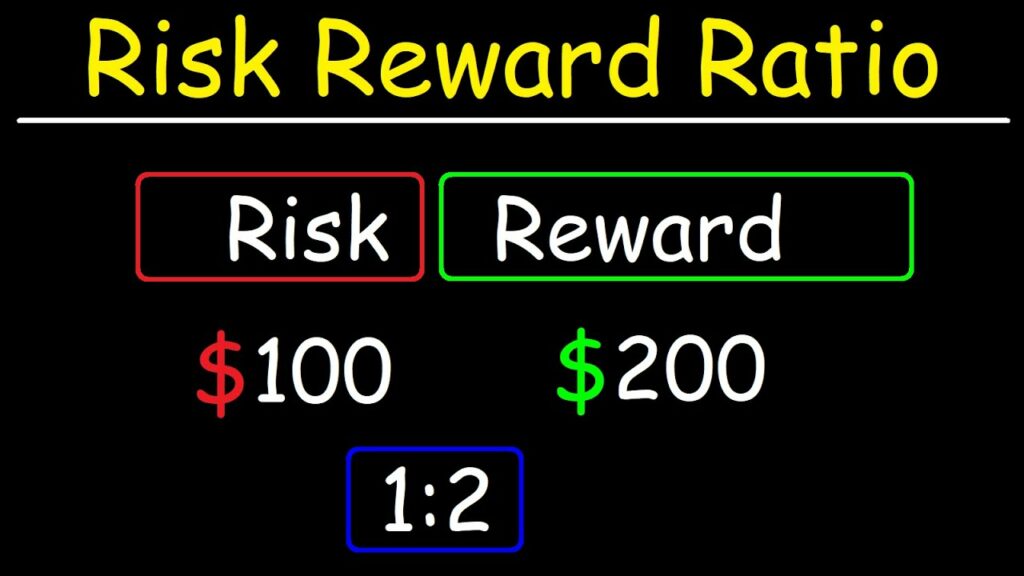Investors and traders understand that their success depends on crunching the numbers for a risk-reward ratio with a calculator. This is because the amount of potential reward can only be determined through careful calculation, analysis, and research – all of which are key elements to making profitable trades. The reward must always outweigh the risk taken in order to make a sound investment decision. It’s like walking a tightrope between two opposing forces: without an understanding of both sides, you could easily fall off into oblivion! With this blog post, we’ll take you through the process of using a risk-reward calculator to maximize your returns.
Understanding Risk and Reward
Risk and reward are two of the most important components of investing. Risk refers to the potential for loss or gain, while reward is the potential gain from an investment or trade.
The risk reward ratio is a comparison between these two elements that investors must consider before making any decisions.

An investor can be an individual or entity who puts money into a financial market with the expectation of a return. This could include taking ownership in stocks or making investments in bonds and commodities.
Calculating the risk reward ratio provides insight into what kind of actual returns may be expected based on specific financial calculations.
What is a Risk Reward Calculator?
A risk reward calculator is a tool used to determine the ratio between the risk taken when opening a position and the potential reward. It helps investors analyze the stock market by assessing how much risk they are willing to take for a certain amount of reward.
Using this calculator can give investors a better idea of their chances of success when trading in financial markets.
Why is it Important for Investors?
The risk reward calculator is essential for investors because it gives them insight into how much money they stand to make from each trade. By calculating their risk-reward ratio beforehand, investors can evaluate different trade opportunities based on their potential rewards versus risks.
The calculator also allows traders to set stop-loss and take-profit levels according to their desired ratios, so they can minimize losses in case the market turns against them.
How Does it Help in Stock Market Analysis and Trading?
The risk reward calculator helps traders analyze financial markets by providing specific figures about potential gains and losses. Through analysis using this tool, traders can gain valuable insights about specific investments and markets that allow them to make informed decisions.
For example, if a trader has identified an investment opportunity with a good chance of returning profits, they can use the calculator to estimate how much they could potentially gain versus how much they would stand to lose if the price goes in another direction. If the figures show that there is more risk associated with the investment than potential reward, then it might not be worth pursuing.
An Example of Risk Reward Calculation in a Specific Investment Scenario
XYZ Europe Ltd. , a retail CFD provider, offers trading on over 200 instruments across Forex, Commodities, Indices and Shares markets.
Let’s say an XYZ Europe trader believes that the Euro will peak at 1.20 against the US Dollar before dropping back down again. They decide to open a “buy” position, anticipating that this current peak will be followed by a retracement lower.
Entry Price: 1. 2000Stop Loss: 1.
1980Target Price: 1.2030.
(Note: Stop Loss orders will close our position at 1. 1980 if our trade falls to this level.
) .
(Risk : Reward): In this case, we have 2 pips (0. 0002) of potential risk and 3 pips (0.
0003) of potential reward; giving us a good (1 : 1.5) ratio.
(Note: A 1 : 1. 5 risk reward ratio is considered a good starting point.
An acceptable ratio is usually accepted as being between 1 : 1 and 1 : 2.).
Calculating Risk Reward Ratio
Definition and Importance of Risk Reward Ratio
A risk reward ratio is the relationship between two or more numbers used to measure the potential gains from a given trade against the possible losses. This calculation helps investors determine their chances for success in any given scenario and make informed decisions about where to invest their money.
How to Calculate Risk Reward Ratio?
To calculate the risk-reward ratio, you need to know the entry price, stop loss and target price of your trade. The risk-reward ratio can be calculated by dividing the distance from your entry price to your stop loss (minus any applicable commissions) by the distance from your entry price to your target (minus any applicable commissions).
If you are using a profit calculator, this calculation will be done for you.
Understanding the Significance of the Ratio in Making Investment Decisions
The risk reward ratio is an important factor when making investment decisions because it provides insight into how much money you stand to gain or lose if your trade succeeds or fails. Generally speaking, a lower ratio indicates that there may be more risk associated with the investment than potential reward.
(Note: It’s important to remember that higher ratios don’t guarantee success; they just indicate that there may be less risk associated with the investment.)
Using a Risk Reward Calculator to Determine the Ratio
Traders can use a risk-reward calculator to quickly determine their desired ratio before entering into any trades. By inputting their entry, stop loss and target levels into the calculator, they will get an accurate measurement of their potential gains and losses based on these specifications.
(Note: If traders are using automated trading platforms, they will typically have access to built-in calculators that provide this information.)
Applying Risk Reward Ratio in Trading
Evaluating Trade Opportunities Based on Risk Reward Ratio
(Note: When evaluating a trading opportunity, traders should always consider both the risks and rewards involved in taking on that particular position.)
